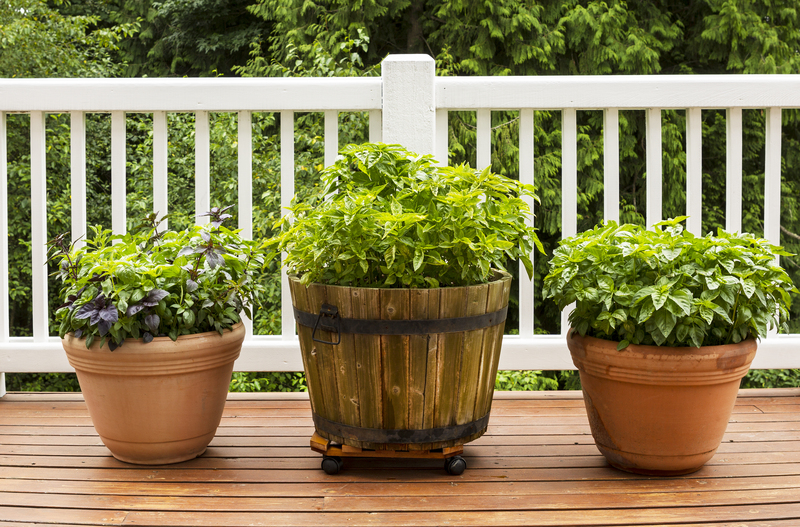Key Actions to Stop Summer Drought from Wrecking Your Lawn
Every homeowner dreams of lush, green grass during the summer. Unfortunately, summer drought conditions can quickly transform a vibrant lawn into a withered patch. The scorching sun and lack of rain create harsh conditions for grass health, but timely and strategic actions can ensure your yard remains healthy despite the heat. In this comprehensive guide, we explore key lawn care actions to prevent drought damage, using the latest horticultural insights and best practices for thriving turf during dry seasons.
Understanding the Impact of Summer Drought on Lawns
Drought stress on grass leads to browning, thinning, and overall decline of your lawn. Water is the most critical component for turf survival, and without adequate moisture, vital processes like photosynthesis slow down, root growth weakens, and weeds invade more easily. Drought-compromised lawns are also more susceptible to pests, disease, and further stress.
- Brown or patchy areas signal moisture deficiency.
- Soil compaction increases when drought persists, making water penetration even harder.
- Survival strategies involve retaining existing moisture, adapting care tactics, and using drought-resistant products or species.
Recognizing Early Signs of Lawn Drought Stress
Spotting symptoms early is key to drought mitigation:
- Grass leaves turn blue-gray instead of vibrant green.
- Footprints remain visible after walking over the lawn.
- Grass growth slows substantially or stops.
By acting quickly when these signs appear, you'll prevent permanent grass loss and restore your lawn after the drought period ends.

Best Practices for Water Conservation and Efficient Irrigation
Smart irrigation is the foundation of drought survival for any lawn. Efficient watering ensures every drop counts and helps prevent common problems like shallow roots or fungal diseases.
Water Deeply, Not Frequent
- Soak soil deeply to a depth of 4-6 inches to encourage robust root systems.
- Aim for about 1 inch of water per week, including rain.
Watering deeply trains grassroots to probe further into the soil, making them more drought-resistant.
Optimal Timing Matters
- Water lawns early in the morning (before 10 AM) to reduce evaporation.
- Avoid late evening watering as prolonged moisture on blades boosts disease risk.
Use Smart Irrigation Technology
Invest in smart controllers or soil moisture sensors to automatically adjust irrigation schedules in response to rainfall or soil dryness. Drip irrigation or soaker hoses can help target roots directly, further increasing efficiency.
Choose the Right Grass Species and Improve Turf Resilience
One of the most effective ways to inoculate your lawn against summer drought is to plant drought-tolerant grass species or use resilient grass seed blends.
Drought-Tolerant Grass Varieties
- Bermudagrass
- Zoysiagrass
- Tall fescue
- Buffalograss
- Fine fescues (creeping red, hard fescue)
These varieties have deeper roots and are specifically bred to withstand hotter, drier climates, making them ideal for areas prone to regular summer droughts. If overseeding, choose a mix designed for your zone's typical weather patterns.
Boost Turf Health with Proper Fertilization
- Fertilize in spring or fall, not during drought.
- Use slow-release products to give steady nutrients without stressing the grass.
- Choose formulations lower in nitrogen during summer to prevent forced, tender growth that's more susceptible to drought.
Healthy, well-fed lawns recover from drought quicker and resist stress better.
Amend and Mulch Your Soil for Maximum Moisture Retention
Soil quality dramatically impacts your lawn's drought resilience. Healthy soil holds more water and supports deeper root development -- essential during periods of high heat and low rainfall.
Test and Improve Soil Structure
- Work in organic matter (like compost or well-rotted manure) to increase moisture retention.
- Avoid heavy clay or sandy soils by amending with appropriate materials to improve texture.
- Test pH and adjust as needed for optimal turfgrass growth.
Mulching Grass Clippings
Leave clippings on the lawn after mowing; they help shade the soil, provide nutrients, and minimize water loss through evaporation. Use a mulching mower for best results.
Adjust Mowing Habits to Support Grass Health
Mowing can either help or hurt grass during summer drought. Follow these proven practices to ease drought pressure on your lawn:
- Raise your mower blade to cut at the highest recommended height for your grass type (usually 3-4 inches).
- Avoid mowing during extreme heat or drought stress periods.
- Never remove more than one-third of the blade height at once.
- Keep mower blades sharp to ensure clean cuts that heal quickly.
Taller grass blades shade and cool the soil, reduce water loss, and encourage deeper root growth -- all of which are vital during hot, dry spells.
Practice Smart Lawn Maintenance Throughout the Drought
Limit Foot Traffic
Avoid heavy foot or equipment traffic on stressed grass. Compaction exacerbates moisture problems and damages already weakened turf.
Postpone Lawn Projects
- Delay aerating, dethatching, or aggressive weed control until after drought passes.
- Minimize disturbance to root systems during dry spells.
Monitor for Pests and Diseases
Drought-affected lawns are more susceptible to pests like grubs and weed invasions. Stay vigilant and treat only as necessary using targeted, non-stressful remedies.
Encourage Deep Root Systems for Lasting Resilience
The ultimate defense against summer drought is a lawn rooted deeply and healthily in the soil. Encourage deep rooting by following these best practices:
- Avoid shallow, frequent watering.
- Aerate compacted soils during the growing season (outside of drought periods).
- Top-dress with organic matter annually.
Deep roots are your lawn's insurance policy against the stress of drought. Lawns with deep roots withstand heat waves longer and recover more quickly after rainfall returns.
Should You Let Your Lawn Go Dormant?
Some cool-season grasses will naturally go dormant during summer drought, turning brown to conserve energy. Many homeowners worry about this, but dormancy is a survival mechanism. If you choose to let your lawn go dormant:
- Water occasionally (about once during a lengthy drought) to keep crowns alive.
- Avoid heavy traffic until cool, wet weather returns.
- Do not fertilize dormant lawns.
Most dormant lawns will green up rapidly when rains return -- just be patient and avoid panicking with excessive watering or chemicals.
Smart Landscaping Strategies for Drought-Resistant Lawns
Beyond the grass itself, creating a drought-resistant yard involves adopting smart landscaping principles:
- Use mulch around trees and in planting beds to retain soil moisture.
- Consider xeriscaping -- integrating drought-hardy plants and reducing turf where feasible.
- Install rain barrels or cisterns to harvest water for dry spells.
Combining these landscaping techniques with attentive lawn care reduces your water needs while maintaining curb appeal during droughts.

Common Mistakes to Avoid During Summer Lawn Drought
- Overwatering or frequent shallow watering weakens root systems and wastes resources.
- Mowing too short increases water loss and damages roots.
- Applying fertilizer or herbicides during severe drought stresses your grass.
- Neglecting regular maintenance, such as mowing and pest monitoring, worsens drought impact.
Avoiding these pitfalls gives your lawn the best chance to survive and thrive when drought strikes.
Conclusion: Protecting Your Lawn Through Summer Drought
Summer droughts need not spell disaster for your lawn. By understanding the effects of heat and dryness and employing the key actions and best practices outlined in this guide, you'll give your grass the tools it needs to survive -- even flourish -- in the hottest, driest months.
- Water wisely and invest in soil health.
- Choose or switch to drought-tolerant grass varieties for reliability.
- Practice proper mowing and lawn care, especially during high-stress periods.
- Integrate smart landscaping to optimize your entire outdoor environment for drought resistance.
By acting proactively and consistently, you can stop summer drought from wrecking your lawn and enjoy a beautiful, healthy yard year after year -- no matter what the weather brings. Remember: a resilient lawn starts with informed, attentive care!